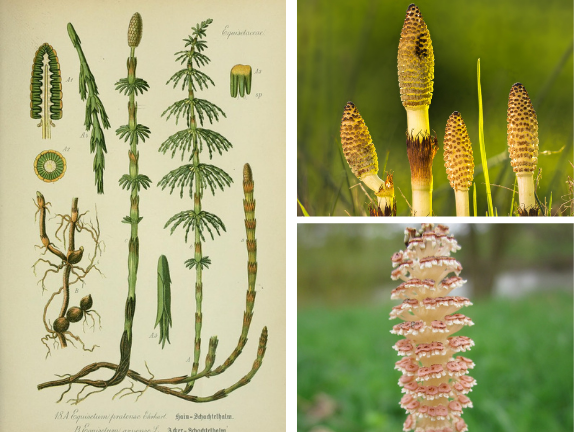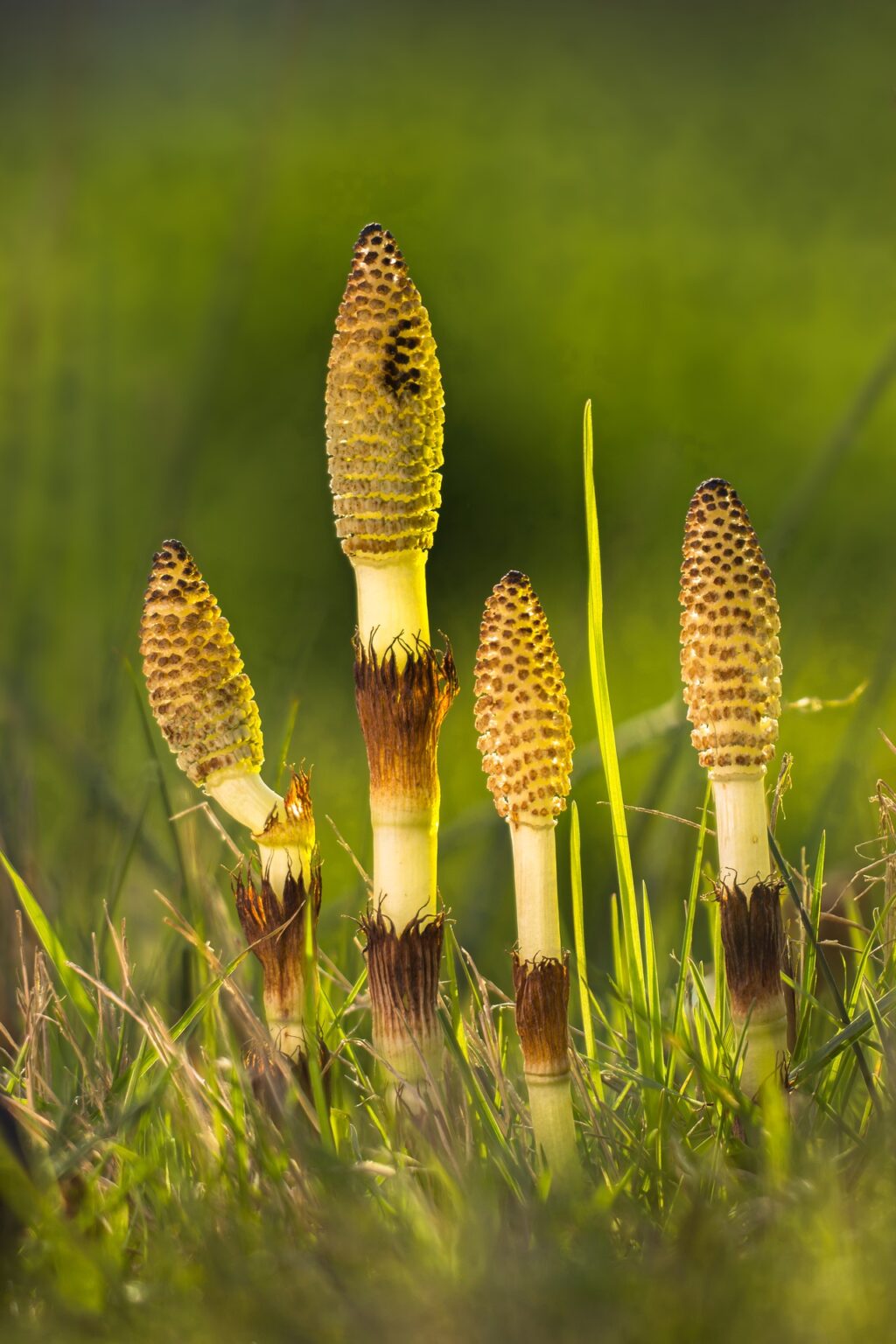Equisetum arvense
Latin Name: Equisetum arvense
Herb Class/Action: Nutritive, kidney tonic, astringent, lymphatic, supports microbial balance
Parts Used: Aerial parts
Flavors: earthen, not strong flavors
Energetics: drying, cooling
Traditional Benefits: Bone support, vascular support, immune support, kidney and lung support, musculoskeletal support, skin support, supports the body’s natural healing process
Horsetail is an herb that quite literally helps us to embody its namesake — supporting long and healthy luscious hair, strong nails, and collagen production within the skin. Known as a beautifying herb, this plant medicine also deeply assists the kidneys, promoting fluid balance.*
Horsetail is a SURVIVOR. This prehistoric plant—which prefers damp environments but can truly thrive anywhere—has been around for a long time. We’re talking hundreds of millions of years. She’s adaptable, she’s resilient, and like a wild horse — she is fierce.
Horses are naturally regarded for their luscious manes. So it’s no surprise that an herb named horsetail quite literally embodies its namesake—or, it helps us to, at least. When consumed internally or applied topically, horsetail helps strengthen and support healthy hair, nails, and skin. This herb was named for its appearance—it looks like a horse’s tail—and its hair-beautifying benefits are no coincidence.

One of the most nutrient-rich plants (on par with nettle and oatstraw), horsetail is rich in minerals including silica, phosphorus, iron, calcium, magnesium, manganese, and potassium. And while these other minerals are definitely valuable, it’s the high silica content that has earned horsetail its reputation over time and solidified its value in the modern herbalism community.
So, what does all this silica do for us? As mentioned, it gives horsetail the power to support our healthy hair, skin, and nails. Wondering how? It’s because silica helps with collagen production and mineral absorption—helping the hair, skin, and nails get the nutrients they need to be strong, smooth, and shiny.
As horsetail and its minerals support the kidneys, skin, and hair, it’s also a lovely ‘de-puffing’ herb that can be combined with bodywork and facial massage such as Gua Sha. Silica also helps support healthy connective tissue, playing a part in joint and cartilage protection as well as healthy bone maintenance.
Interestingly enough, one of the major difficulties we face in terms of kidney health today is heavy metal exposure, due to the ubiquitous nature of industry byproducts such as aluminum. Although horsetail is renowned as a “kidney herb,” part of the reason it rose to fame is because its silica content helps to maintain the normal and healthy elimination of heavy metals, allowing the kidneys to maintain optimal function without an added stressful load.*
“Horsetail has the ‘intelligence’ to deal with silica and share this ‘knowledge’ with the organism in need of the substance.” — Matthew Wood

